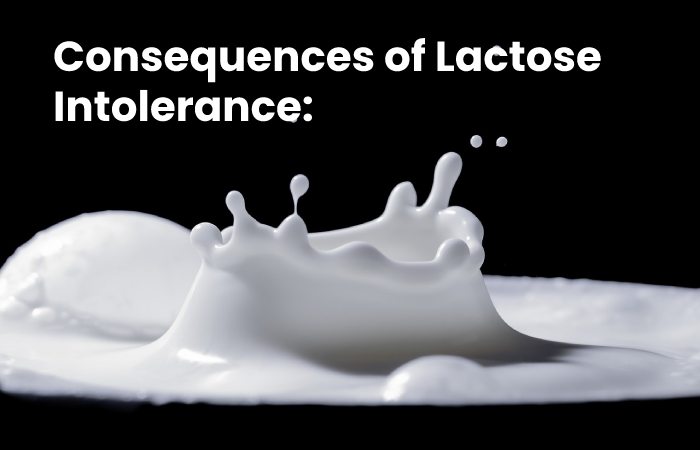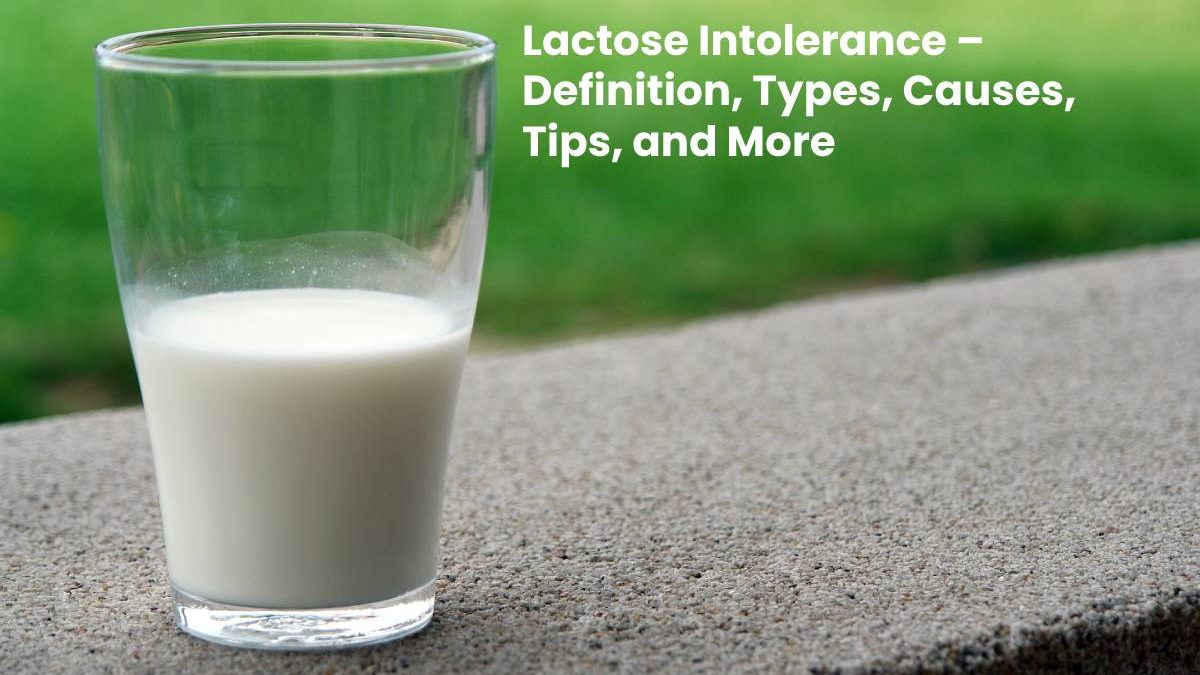Table of Contents
What is Lactose Intolerance?
Lactose intolerance causes by lactose malabsorption, a condition in which the small intestine cannot digest or break down all of the lactose that a person eats or drinks. Not all people with lactose malabsorption have symptoms after consuming lactose.
Lactose is the sugar contained in milk (cow, sheep, goat, humans, although it is also present in many daily consumption products.
Lactose Intolerance Classified into Three Different Types.
Congenital Intolerance
- It causes by a mutation in the lactase gene that results in minimal or no lactase activity.
- It is infrequent. Babies experience diarrhea from the first exposure to breast milk, and it lasts a lifetime.
- The only possible treatment is to avoid milk containing lactose, and unique lactose-free milk formulas must use.
Primary or Racial Intolerance
- There is a progressive loss of lactase production. That is a gradual loss of the ability to digest milk.
- It usually occurs throughout life in certain ethnic groups.
- Its cause is genetic.
- People with this intolerance notice how to milk intake causes more and more symptoms.
- Once it appears, it is progressive and permanent.
Secondary or Acquired Intolerance
- It causes by temporary intestinal damage that decreases lactase activity.
- It can occur in childhood after an episode of acute gastroenteritis, being transient and recovering function in a few weeks.
Consequences of Lactose Intolerance:

Developing an intolerance to this sugar leads to bloating, gas, flatulence, stomach pain, nausea, vomiting, diarrhea, and other gastrointestinal problems.
The discomfort always begins after eating dairy products (or dishes that include them, such as creams), although each person develops their level of intolerance, so it is not usually a big problem in small amounts.
There is no treatment for lactose prejudice, so limiting your intake is the only solution, although it is always wise to see a dietitian for helpful information on this matter.
How to Deal with Lactose Intolerance?
Check product labels: packaged foods may contain traces of lactose, so make sure you don’t eat those that can worsen intolerance.
Set your Limit:
Each person’s degree of intolerance differs, so it is essential to establish that limit before leaving all foods with lactose out of the diet. To assess the level of discrimination, it is necessary to stop consuming lactose for three or four weeks to eliminate it from the body entirely and then start adding small amounts of milk or cheese and determine the amount consumed.
Cheese and Yogurt:
Most people with lactose intolerance have no problem eating cheese and yogurt in moderation, as their lactose levels are lower.
Kefir:
It is a dairy product similar to yogurt that can consume despite having lactose intolerance and helping to improve lactose digestion and reduce the symptoms of discrimination and flatulence. In addition, live and active bacterial cultures in kefir help break down lactose during digestion.
Milk Substitutes:
the problem with milk does not usually lie in drinking glass as such, but in adding it to coffee so that it is not so strong or to various dishes when cooking, so using substitutes, such as coconut milk, soy, rice, oats or almonds, is a good option.
Apple Cider Vinegar:
drinking water daily for a while with a tablespoon of apple cider vinegar helps reduce lactose intolerance and improve digestion.
Ginger:
This is an excellent food for relieving gastrointestinal problems and reducing nausea and gas. Boiling a tablespoon of grated ginger in water and drinking a glass (you can add lemon juice and honey) helps relieve symptoms of lactose intolerance.
Chamomile:
It knows that chamomile relaxes and helps with intestinal problems, as it neutralizes stomach acid and reduces bloating. Of course, the ideal is that the infusion ended with dried chamomile flowers.
Reinforcement of Other Foods:
dairy products are a source of calcium, which is essential for our teeth and bones, so if the intolerance is very severe, this deficiency must enrich with other foods that also have what lactose offers: grains, beans, beans, lentils, spinach, broccoli, cabbage, soybeans, nuts, etc.
What Causes Lactose Intolerance?
Lactose intolerance begins with lactose malabsorption. If a person has lactose malabsorption, their small intestine produces low lactase levels, the enzyme that breaks down lactose and cannot digest all the lactose they eat or drink.
As a result, bacteria in the colon break down lactose and create fluids and gases. In some people, these extra fluids and gases cause symptoms of lactose intolerance.
The following Conditions can Cause Low Levels of Lactase in the Small Intestine and Lactose Malabsorption:
Non-persistent lactase. In people with nonpersistent lactase, the small intestine produces less lactase after infancy. In addition, lactase concentrations decrease with age. Therefore, indications of lactose intolerance may not commence until later in childhood, adolescence, or early adulthood. Nonpersistent lactase is the most common cause of low lactase levels.
Injuries to the small intestine. Infections, diseases, or other conditions that damage the small intestine can cause it to produce less lactase. Treatments for other conditions, such as drugs, surgery, or radiation therapy NIH external link can also injure the small intestine.
Early birth. In early childhood, the small intestine may not make sufficient lactase for a short time after birth. However, the small intestine usually produces more lactase as the baby grows. Congenital lactase deficiency. In this rare condition, the small intestine produces little or no lactase from birth. Genes cause non-persistent lactase and congenital lactase deficiency.
Tips to Deal with Lactose Intolerance
1. Avoid Self-Diagnosis and do not Stop Consuming Dairy without Consulting your Doctor.
If you suspect intolerance, consult your doctor to rule out other digestive problems and help you take the appropriate measures for your case.
2. Know Which Foods Incorporate Lactose.
In addition to milk, this sugar is also present in some manufactured industrial products. Consequently, lactose can originate in foods as diverse as sausages, pâtés, margarine, ice cream, sauces, deli meats, fortified cereals, instant soups, and ready meals.
3. Learn to Read Packaging Labels.
They will guide checking whether a food contains lactose or not since current legislation requires manufacturers to include information on allergens in them. In particular, precautions must take with those containing milk sugars and fats, rennet, whey, or powder. Warnings such as “may comprise traces of milk” should also be considered.
4. Lactose-Free Dairy Products, your Great Allies.
Many milk brands market ranges of lactose-free products that can make the need to partially or entirely exclude dairy products from your diet more bearable.
5. Supplement your Diet with Other Foods Rich in Calcium, Vitamin D, Riboflavin, and Protein.
The lack of milk in the diet can cause a lack of calcium, vitamin D, riboflavin, and protein, accompanied by malnutrition, osteoporosis, and weight loss. For this cause, it is advisable to eat other sources of these nutrients: vegetables such as spinach, Swiss chard, or broccoli; legumes such as navy beans, lentils, and chickpeas; the egg yolk; fish such as sardines, salmon, and sole; prawns and all nuts -except chestnuts-.
6. Experiment in the Kitchen.
There is a variety of lactose-free recipes that we can prepare ourselves at home. We can also go to restaurants that offer lactose-free menus.
7. Consult your Pharmacist about Nutritional Supplements of Lactase or Probiotics.
The pharmacist can advise you on nutritional solutions with lactase in tablets to facilitate digestion for lactose-intolerant people. Its use allows, in some cases, an intake of products with lactose practically without restriction.
If our doctor or pharmacist recommends them, we can use these supplements in situations in which foods with lactose are probably going to be eaten, such as meals away from home, celebrations, etc. You can also supplement your intake with different probiotics, relieving some symptoms, such as flatulence and abdominal pain.
8. Pay Attention to Medications.
About 20% of prescription drugs and a large part of over-the-counter drugs contain lactose as an excipient, so you should also consider their composition when you need them.
Conclusion
Lactose intolerance causes by lactose malabsorption, a condition in which the small intestine cannot digest or break down all of the lactose that a person eats or drinks. Not all people with lactose malabsorption have symptoms after consuming lactose.
Also Read : Constipation – Introduction, Causes, Complications, Treatments, and More

